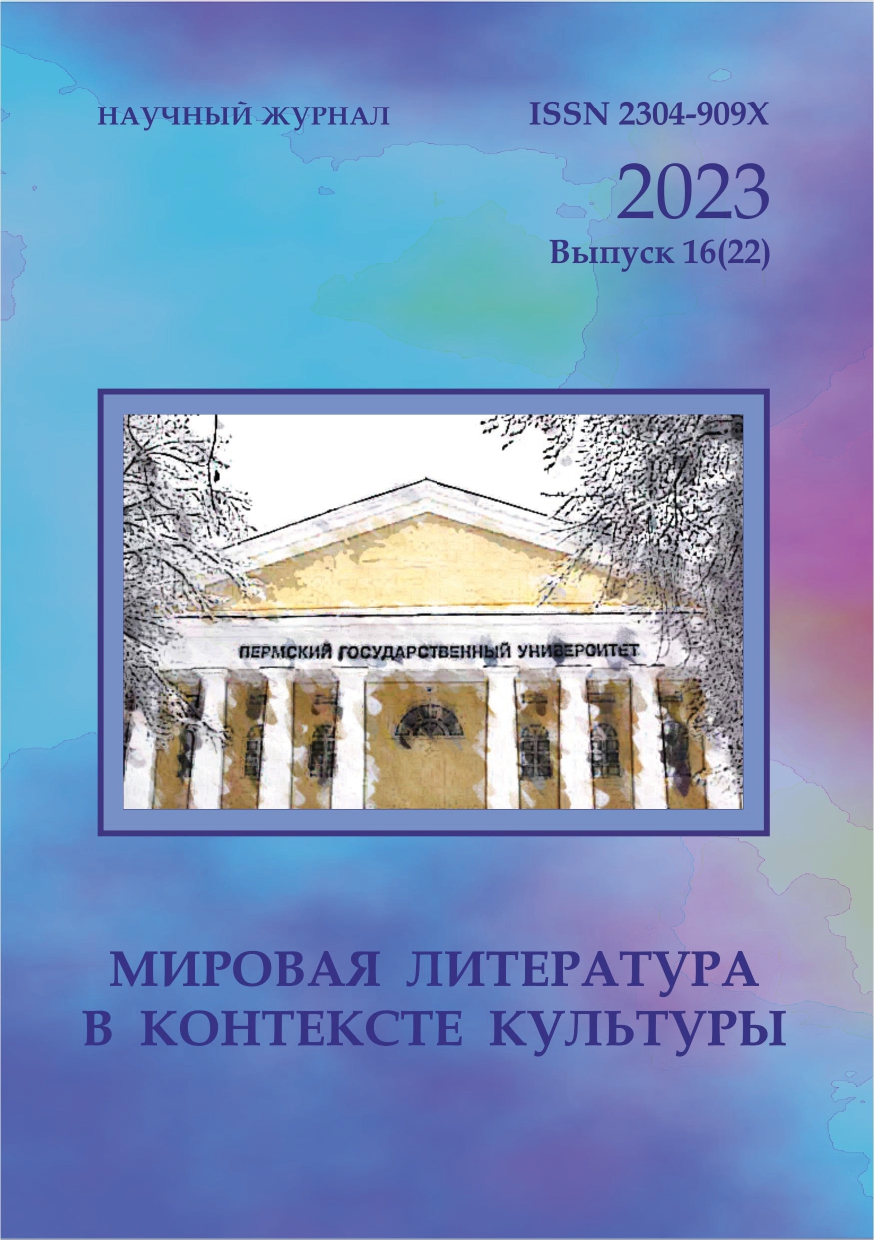This is an outdated version published on 2023-06-30. Read the most recent version.
The Artistic Depiction of the French Revolution in “My French Master” by E. Gaskell
DOI:
https://doi.org/10.17072/2304-909Х-2023-16-107-114Abstract
The article deals with the story of E. Gaskell "My French Master" (1853). Attention is paid to the study of the depiction of the French Revolution in the story in comparison with the later long story "My Lady Ludlow" (1859). The analysis reveals a commonality - the absence of a depiction of the actual revolutionary events, an emphasis on the detrimental impact of a social upheaval (big solemn history) on the life of an ordinary person, which is achieved through the introduction of a narrator (a subject of speech). The difference lies in the absence of a tragic element in the potrayal of the consequences of revolutionary events in the story, which comes to the fore in the long story. The way of depicting child psychology is analyzed: children's emotional perception and assessment of historical events echo those of their parents. Attention is also paid to Gaskell's interest to the history and culture of France.Published
2023-06-30
Versions
- 2023-12-29 (2)
- 2023-06-30 (1)
How to Cite
Firstova М. Ю. (2023). The Artistic Depiction of the French Revolution in “My French Master” by E. Gaskell. World Literature in the Context of Culture, 16(22), 107–114. https://doi.org/10.17072/2304-909Х-2023-16-107-114
Issue
Section
Статьи

